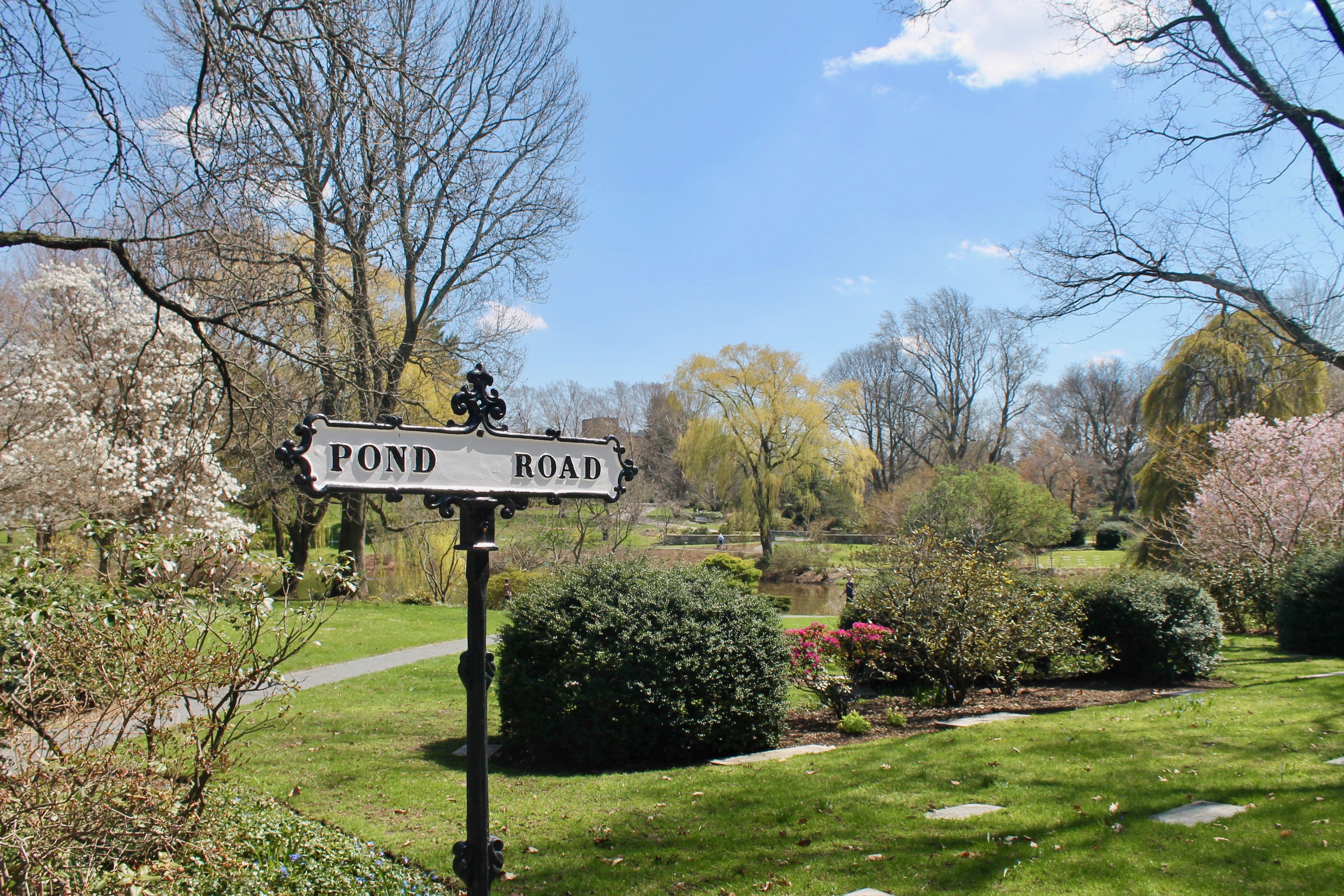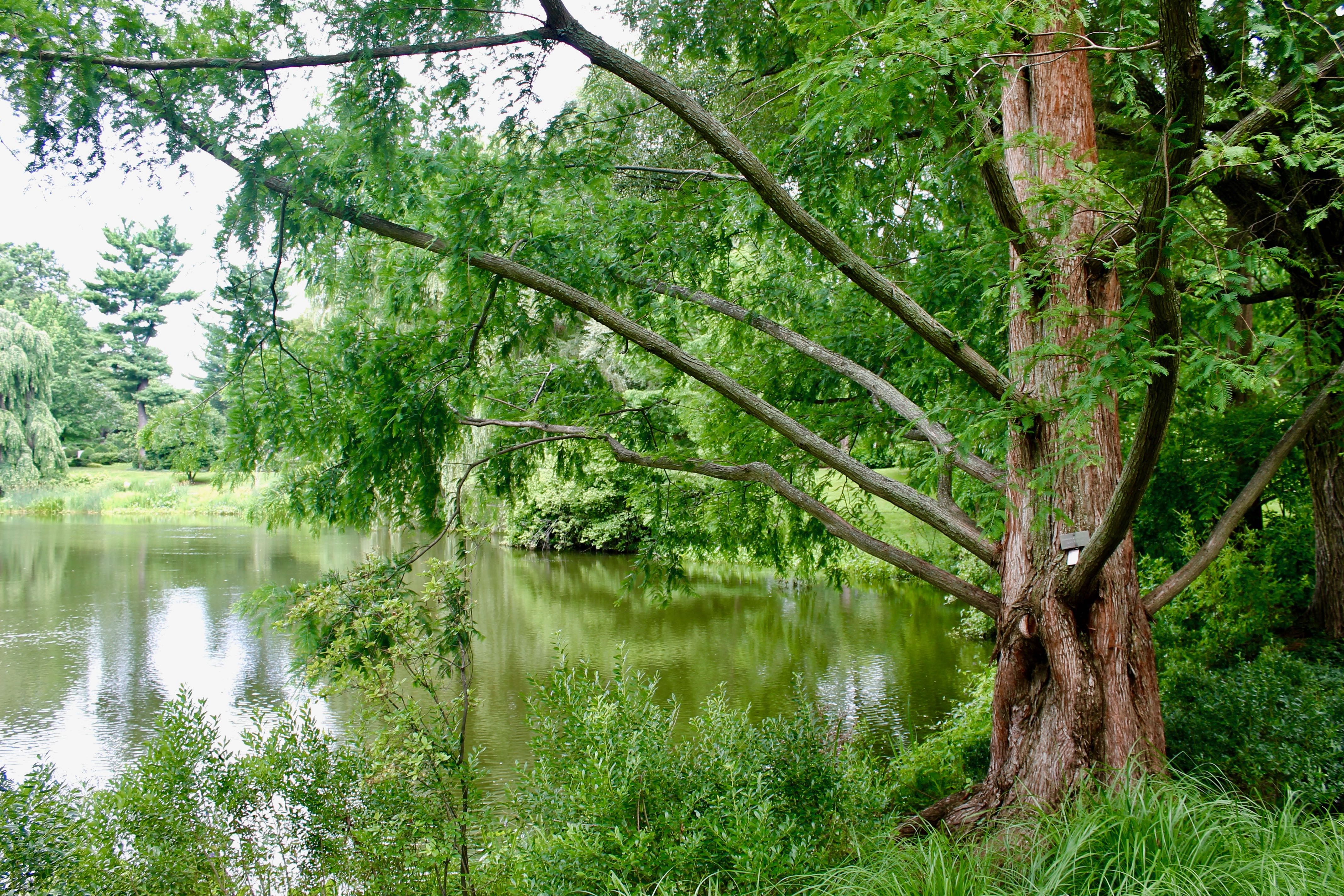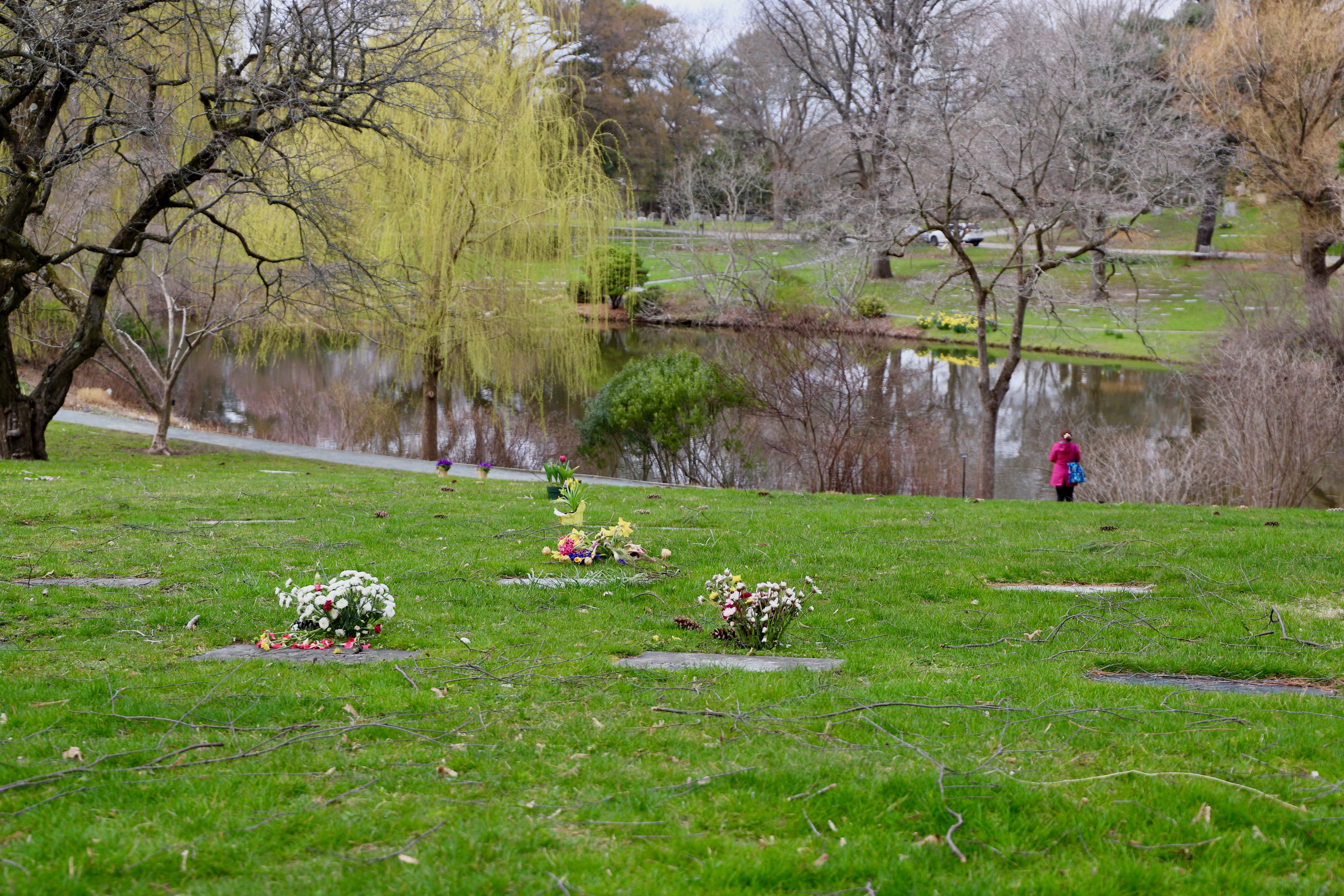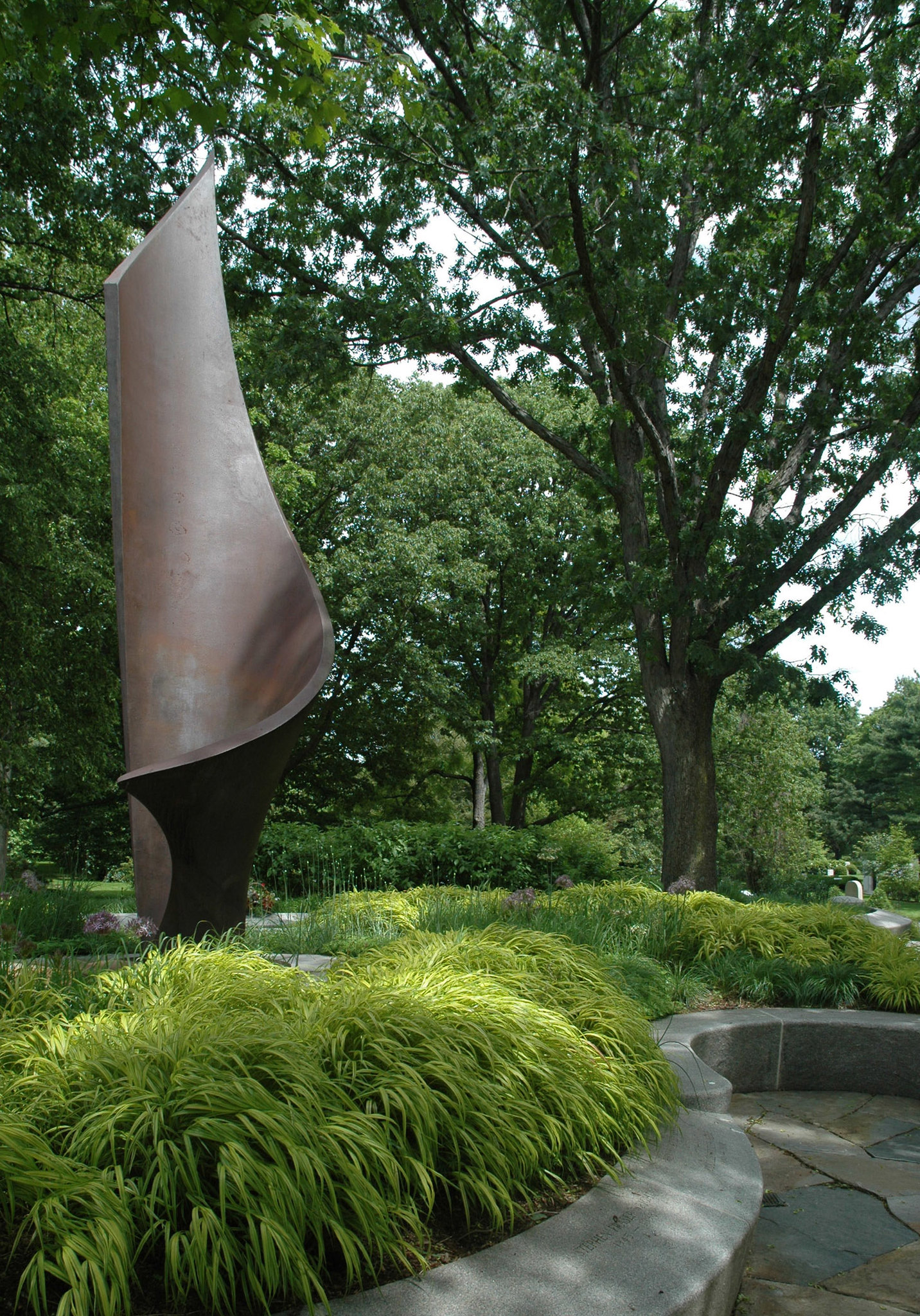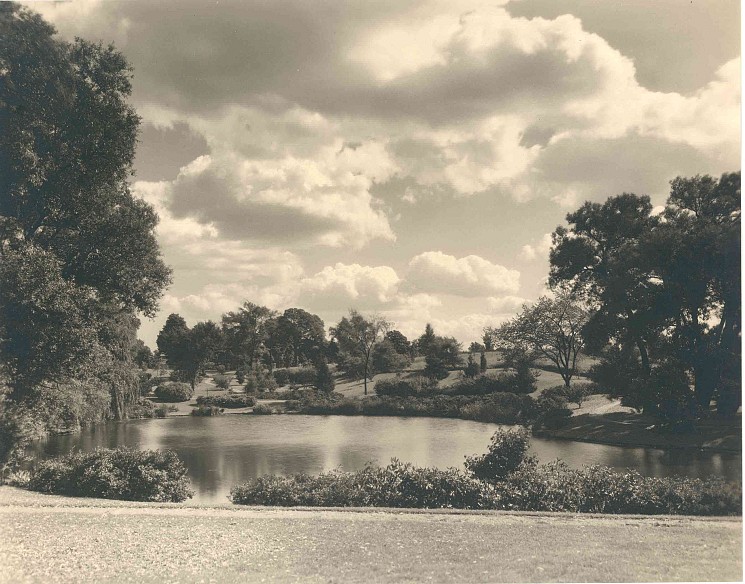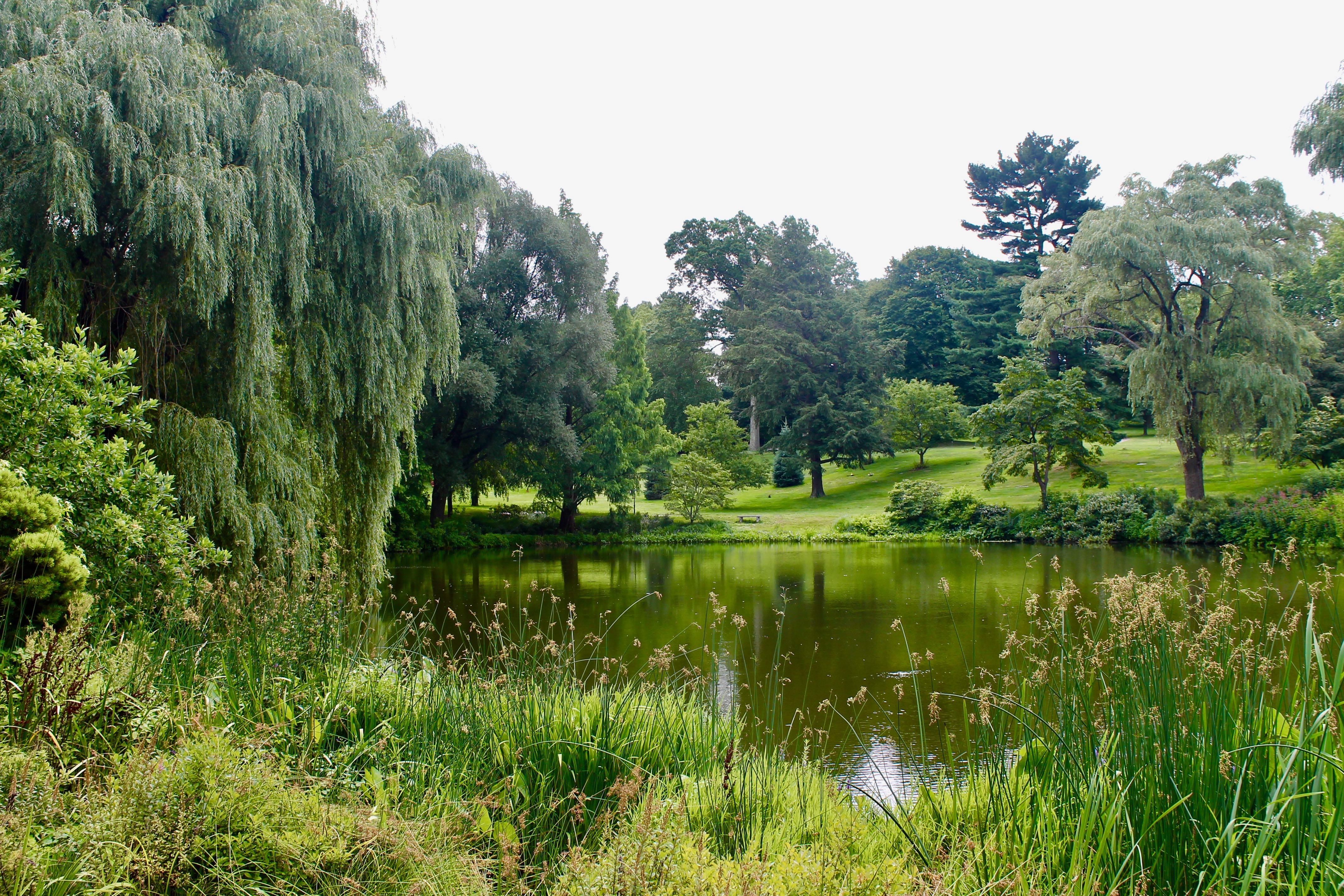
Willow Pond
About Willow Pond
Waterbody/Interment Area/Landscape
15 Acre memorial park concept with a pond on the north side.
Original Design: Laurence Caldwell
Willow Pond Knoll Developed in 1981
Landscape Restoration in 1992 by Halvorson Design
Rain Garden designed and planted in 2003 by New England Environmental Inc.
Butterfly Garden planted in 2005
Willow Pond's story begins in 1912 with the purchase of an additional 15 acres of land extending to Coolidge and Grove Streets. The Cemetery anticipated that, as the parkways extended along the Charles River, this newly acquired land would become the principle entrance for carriages. The new land was developed for use beginning in 1929, resulting in the Willow Pond area. Landscape architect Laurence Caldwell created the design for the area, laid out avenues and paths, and saw to the dredging of the pond.
The new interment landscape reflected the changing needs of the 20th-century Americans: economic concerns, decreasing family size and increasing mobility meant that the public preferred interment spaces for one or two graves rather than large family lots. Mount Auburn responded to these changing needs by developing Willow Pond into a landscape style influenced by Forest Lawn Cemetery in Glendale (outside of Los Angeles, CA).
Laurence Caldwell, a landscape architect active at Mount Auburn in the 1920s and 1930s wrote that older cemeteries were “Uninteresting and repelling because of the hodge podge of objects and the monotonous view of tombstones. He believed “the new cemetery should become a park-like area with inspiring natural scenery carefully preserved and developed to attain a high degree of quiet dignity and peace.” These ideas were applied to the Southwest Corner of the Cemetery with Willow pond as a natural landscape focal point.
The most important aspect of the memorial park concept was that individual and family monuments are taken out of the visual landscape. The markers are flush with the ground except for institutionally located monuments like the Duca Sculpture. The Willow Pond area developed in the 1920s resembles a public park. The landscape is punctuated by beautiful trees and a scattering of shrubs.
“This landscape reflects a 20th century approach to death, just as the other landscapes reflected a 19th century approach to death. This is a much more personal, private place to mourn your dead than the previous sections in Mount Auburn. You know where your monument is; your family knows where the marker is. But the world does not see it; it is not part of that expression of death and mourning. Gone is the 19th century sentiment of death. Here in the 20th century it is simpler, more modern and more distant.”
David Sloane, professor in the Price School of Public Policy at the University of Southern California Changing Tastes Audio Tour [Mount Auburn, 1993]:
In 1992, a major landscaping and replanting initiative developed by the Halvorson Company for the Willow Pond area was implemented to enhance the beauty of the Pond while improving habitat for birds and other wildlife. Later in 2003-2005 the area would again be the focus of various landscape and habitat restoration projects, including the development of a rain garden, to slow the velocity of storm water input into the pond, and a butterfly garden, to provide a habitat that encourages the growth of and sustains the current populations of threatened and near threatened species of butterflies.
Willow Pond Knoll
The project of developing the Knoll overlooking Willow Pond was initiated by Cemetery Trustees in 1979 and called for a large sculpture as a focal point. The young and talented artist, Richard Duca, won the design competition, and on December 12, 1980, the untitled sculpture was set on its granite base overlooking Willow Pond. On June 3, 1981 the new Willow Pond Knoll sculpture was dedicated before a crowd of 300 guests, friends and employees.
Although the Willow Pond Knoll Sculpture was cast in ductal iron, the initial designs were created in Styrofoam. Working in Styrofoam to create the initial pattern, Richard Duca designed the full-scale model in foam and cast it using the “foam vaporization process.” Duca’s final Styrofoam design was packed in specially prepared sand, and liquid metal was poured into the mold causing the Styrofoam to evaporate, creating a “one of a kind” sculpture.
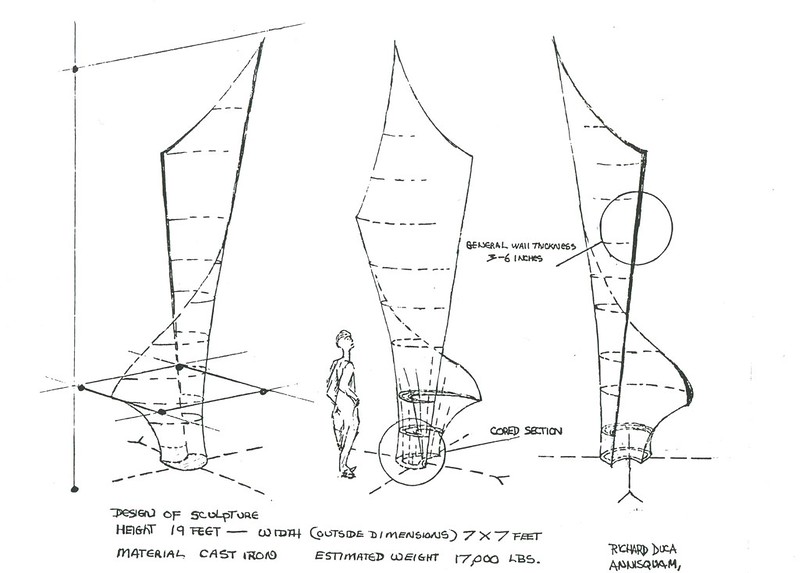
In the fall of 2004, Fine Arts Conservator Barbara Mangum was hired to conserve the sculpture and remove some graffiti. The sculpture’s original coating had worn very thin in places and areas of the surface were unprotected, leading to imperfections known as pitting. The overall surface of the iron also showed some corrosion. The sculptor Richard Duca was consulted and worked with the conservator and Mount Auburn’s Chief of Conservation David Gallagher on the project. After conservation work was completed, Duca commented “It looks better than it ever did.”
For Further Reading:
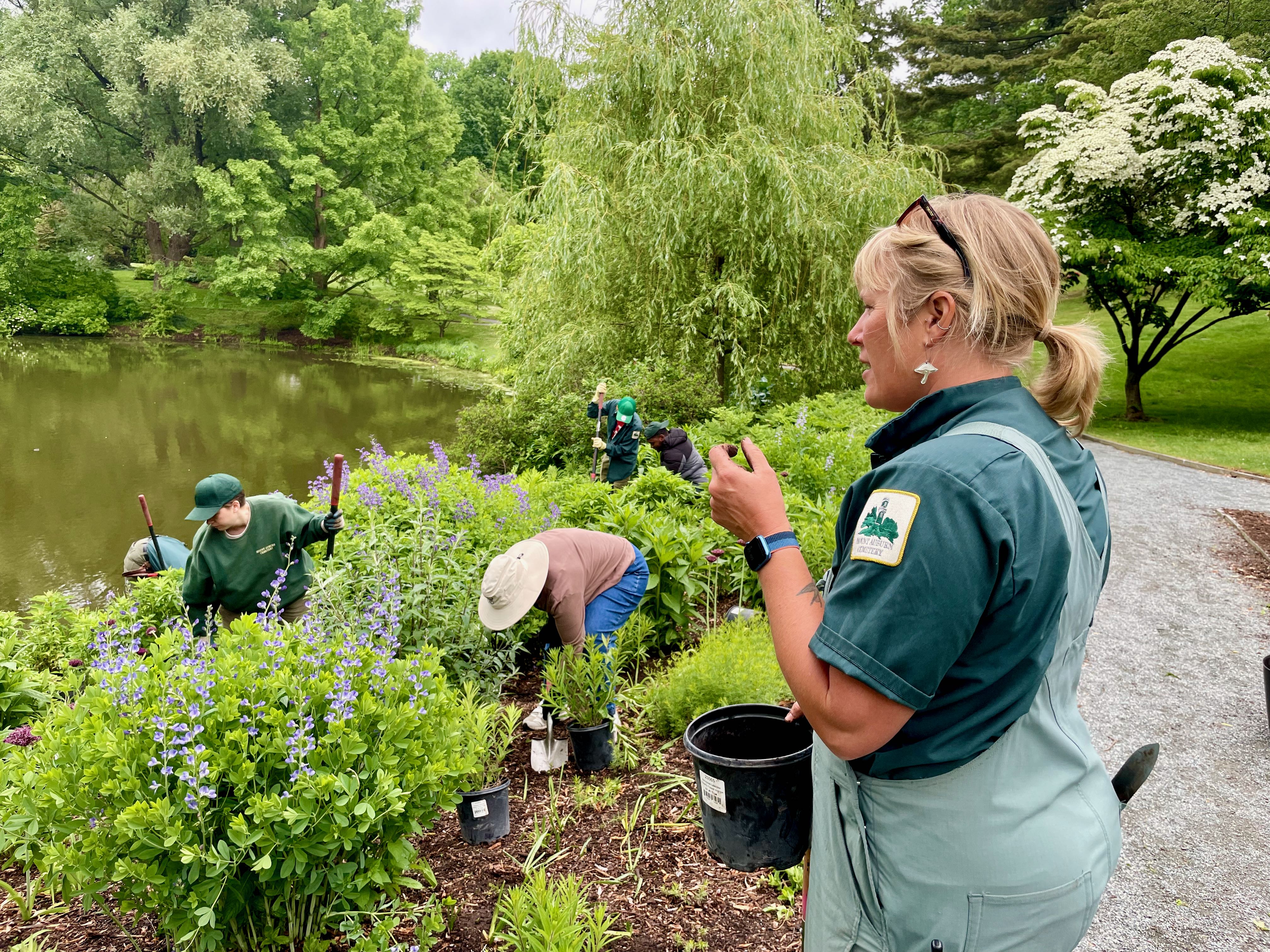
Willow Pond Restoration: Rain & Butterfly Gardens
Willow Pond embodies Mount Auburn as a landscape of change. With multiple sustainability initiatives active since 1992, Willow Pond has been revitalized and restored as a landscape where plants and wildlife can thrive.

